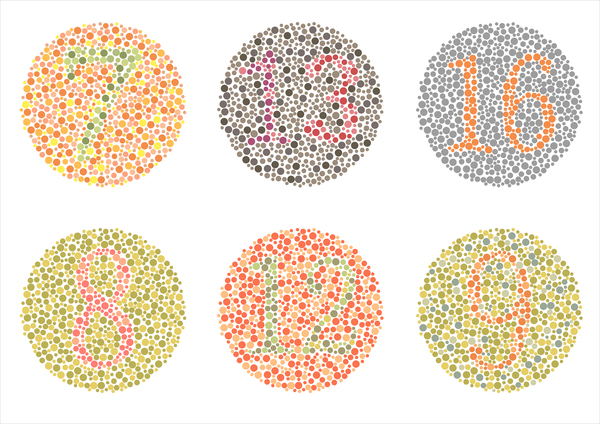Recently. I read an article written by the mother of a boy who has colorblindness, and it made me curious to know more. I didn’t realize that one in 12 people assigned male at birth have inherited a gene that results in a vision deficiency. While I have heard jokes about men who dress as if they selected their clothes in a dark closet (yes, this is sexist), it hadn’t occurred to me that this might be a direct outcome of colorblindness. So, what’s the link between colorblindness and puberty education? What really got me interested was:
- the recognition of all the ways this might hinder student learning.
- the fact that most colorblindness is the result of a recessive gene on the X chromosome.
As we think about students with colorblindness and puberty education programs, it becomes easy to see that they might have difficulty with diagrams and keys that rely on colors as a code. Students might not be able to distinguish between colors on slides and handouts, resulting in confusion and inattention. When we ask students to use colors to illustrate anatomy or to match terms and definitions, we are asking them to do the impossible if we use colors that they can’t distinguish due to colorblindness. Of course, these challenges are also present throughout the school day and during instruction in every topic.
Do you know if any of your students have colorblindness? Probably not.
- 80% of classroom learning is visual, especially in elementary school.
- One child in every classroom has colorblindness, also called color vision deficiency (CVD). #1ineveryclassroom
- One in 12 people assigned male at birth have a genetic CVD. One in 200 people assigned female have it.[1] The recessive gene is carried on the X chromosome. It is most prevalent among Caucasian people with Northern European ancestry.
- Less commonly, CVD can develop from sickle cell anemia and diseases that may occur with aging.
- When students are colorblind, it might look like they are not intellectually able to learn, when in fact they are not able to see the cues to learning.
- Many children don’t find out they are colorblind until 7th grade. Others find out in adulthood.
- Only 11 states test for colorblindness during vision screenings.[2]
Understanding Colorblindness
- Watch a short video, “Colour Blind Awareness Education Animation” by Color Blind Awareness
- Read “Study Finds Overwhelming Evidence That Color Blindness Hinders Learning in School.“ by Enchroma
- Read “Countless kids are colorblind—and don’t know about it. Here’s how to help.” article by Jessica Wozinsky Fleming, Washington Post gift article, 2023-11-7
- Read “What Do Colorblind People See?” by Healthline
Testing for CVD
- Free simple online test for color blindness: Enchroma, To get test results, the user must give an email which might not be okay for students to do. Parents can have their child do it. Also, this is a commercial website that sells glasses for CVD.
- Free set of more complex colorblindness tests.
- Online tests can be helpful, but optometrists and ophthalmologists are able to do conclusive testing.

Adaptations and Supports for Students with Colorblindness
- Test students for CVD and help them get corrective glasses if possible.
- See how your visuals will look to someone with colorblindness using the Chromatic Vision Simulator app for Apple or android phones
- Use colorblind friendly palettes
- Use best practices in color selection
- Choose texture or shape distinctions over color distinctions to provide identification other than color
- Use software that optimizes images to be readable for those with Color Blindness
Learn more
- Color Blind Awareness
- Types of Color Blindness
- Color Blindness, National Eye Institute
References
[2] A Comprehensive Review of State Vision Screening Mandates for Schoolchildren in the United States



